Scaling as a Type of Professional Ultrasonic Teeth Cleaning
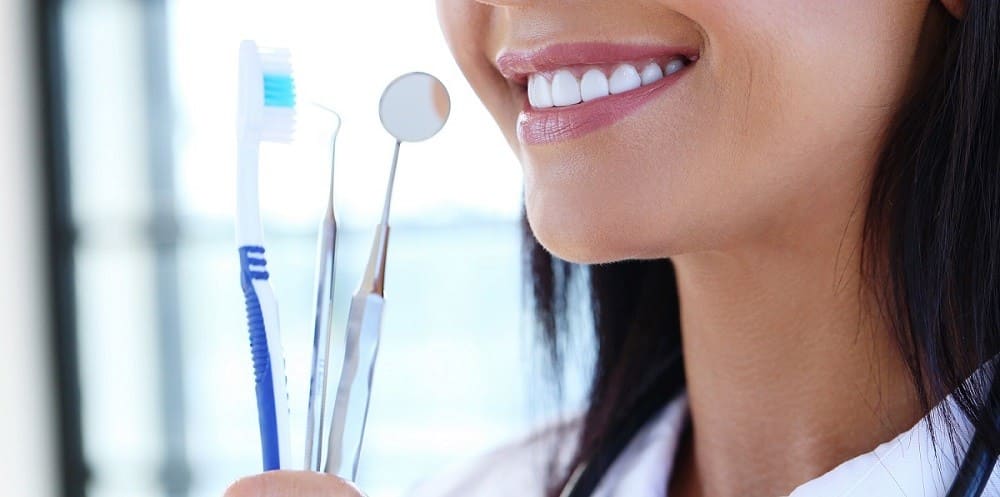
Contents:
- Why do I need Ultrasonic Teeth Cleaning?
- Dental Plaque
- Tartar
- Tooth Enamel Discoloration
- Ultrasonic Teeth Cleaning Means Dental Health: Why?
- Benefits of Ultrasonic Teeth Cleaning
- Contraindications to Scaling
- Methods of Ultrasonic Cleaning
- How Do I Get my Teeth Professionally Cleaned?
- Ultrasonic Teeth Cleaning Aftercare
- Teeth Scaling: Does it Hurt or Not? Patient’s Reviews
Ultrasonic scaling is the most effective method for treating supragingival and subgingival calculus. Almost all people have tartar buildup, regardless of the oral hygiene quality, posing a severe threat to the health of the entire oral cavity. Bacteria that abundantly inhabit it are the leading cause of gingivitis. Untreated, periodontitis develops and will inevitably lead to premature loosening and loss of teeth. A simple and painless procedure, ultrasonic scaling, can help avoid this problem.
Why do I need Ultrasonic Teeth Cleaning?
Ultrasonic cleaning is an essential part of professional oral hygiene. It should be done at least once a year. This procedure is also indicated when planning pregnancy, orthodontic treatment, implant surgery and prosthetics.
Ultrasonic cleaning is an effective means of preventing tooth decay and gum disease. However, prevention is better than cure. Regular professional oral hygiene is the best way to take care of your teeth.
Ultrasonic cleaning uses special modern equipment. For example, a handpiece provided with a device irrigating distilled water or disinfectant solution produces ultrasonic vibrations of a specific frequency. This causes the liquid to be atomised, resulting in the formation of tiny droplets. As a result, the patient feels no pain, and the enamel layer of the teeth is not damaged.
Dental Plaque
Plaque is a soft, yellowish-grey substance that adheres to the surface of teeth, including removable and fixed restorations. While plaque tends to accumulate, regular brushing and flossing break down these bacterial colonies, removing them from the mouth. In general, the more effectively a person brushes, flosses and uses other at-home oral hygiene routines, the less plaque accumulates on their teeth.
However, if left untouched within 24 hours in the mouth while brushing or flossing, biofilm begins to absorb the mineral content of saliva.
Tartar
Tartar is hardened plaque forming on the tooth crown and under the gum. Every time you eat, food particles remain on your teeth, and if you don’t brush them at least twice a day, plaque gradually builds up. Subsequently, soft plaque becomes harder and more, and more organic elements stick to its hard surface, such as:
- food debris,
- dead mucous membrane cells,
- calcium and phosphorus salts from saliva, which gradually mineralise.
Bacteria actively multiply in hardened plaque on the teeth, leading to inflammatory diseases, bad breath and other issues.
As you can see, the reasons for plaque forming on the teeth and under the gums are pretty natural. However, several factors contribute to the process:
- Careless attitude towards oral health routine, especially at night. During sleep, almost no saliva is secreted, the person does not swallow, creating favourable conditions for reproducing bacteria and plaque formation.
- Poor brushing technique: when the brush is moved horizontally, the bristles do not penetrate the interdental spaces.
- Foods harmful to the teeth. Eating sugary or floury foods will cause carbs to adhere to the tooth enamel and encourage pathogenic bacteria growth. It is much healthier to eat hard fruit and vegetables – their fibrous structure helps to remove plaque from the teeth partially.
- Malocclusion. Crowded teeth and misaligned bites complicate proper oral hygiene.
- Cigarettes. Sticky tar settles on the teeth, contributing to plaque and bacterial film formation.
Professional cleaning in the dental office allows you to remove tartar, a source of bacterial plaque, quickly. The procedure is performed using ultrasound, which helps to remove tiny food particles from the mouth and hard plaque.
The procedure prevents various problems such as
- tooth decay;
- gums inflammation and bleeding;
- bad breath;
- bacterial plaque development.
Brushing also helps to brighten your teeth by 2-3 shades, restoring a healthy shine and natural colour to your enamel.
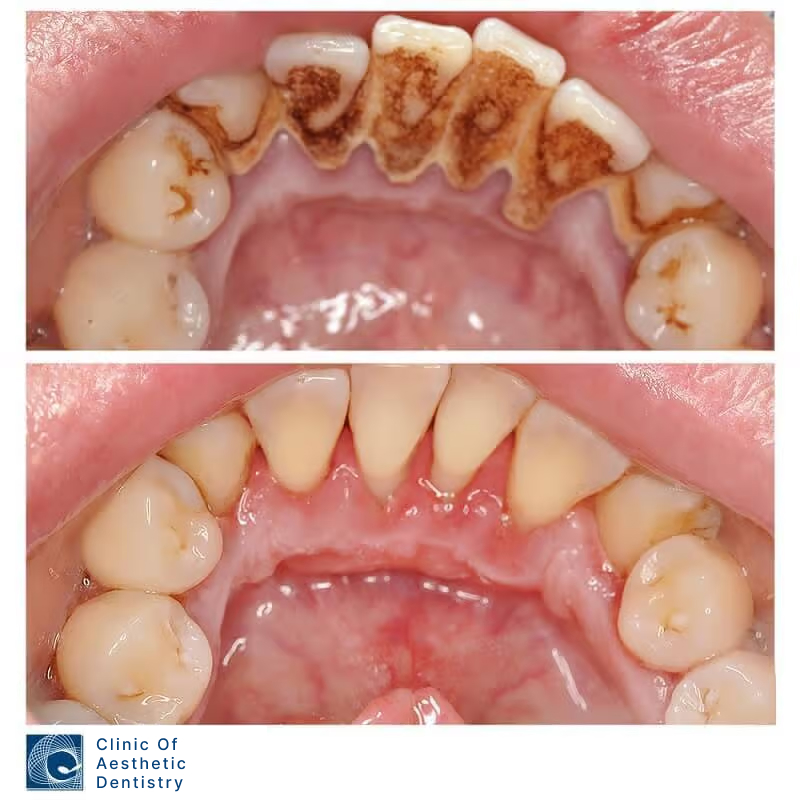
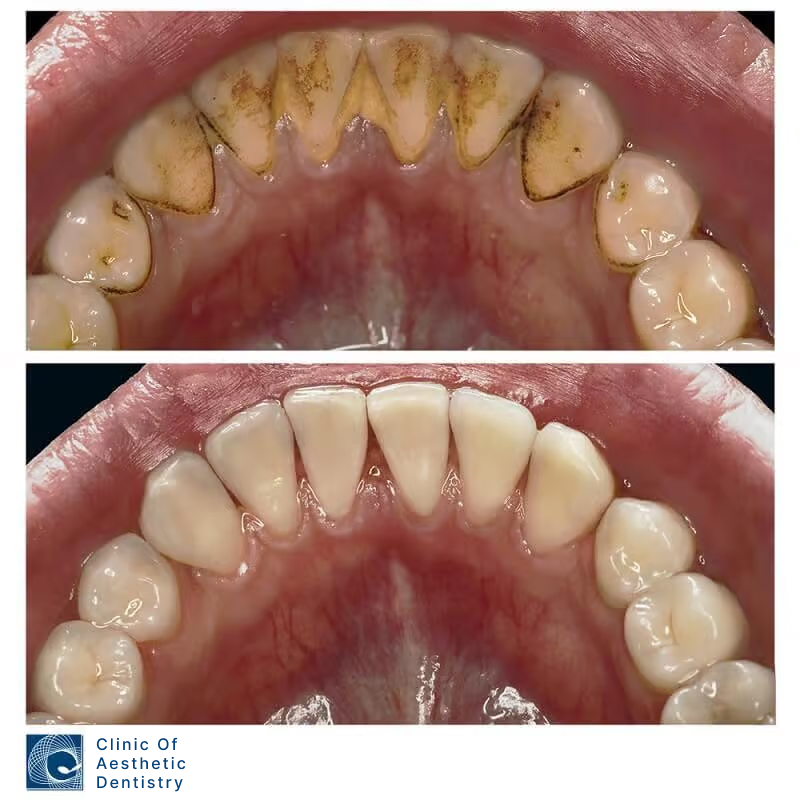
Tooth Enamel Discoloration
This condition is understudied so far, making it difficult for doctors to recommend the proper treatment and preventive methods.
Tooth discolouration is usually caused by poor diet, unhealthy habits and injuries. In fact, there are many more causes. Doctors divide them into external and internal ones.
External causes of tooth discolouration are:
- Smoking or the nicotine tar contained in tobacco. It penetrates deep into the tooth enamel, causing a tooth surface to darken.
- Soft plaque and tartar. They are sources of infection. The plaque is visible to the naked eye. It is located above the gums has a soft texture and yellowish colour.
- Eating foods that contain an intense pigment that can stain teeth, such as pigments in coffee, tea and red wine. In addition, the frequency of consumption of “staining” products directly affects the speed and degree of tooth pigmentation: the more often a person drinks strong coffee, the darker the teeth become.
Ultrasonic Teeth Cleaning Means Dental Health: Why?
Everyone wants to have a beautiful smile and as few problems with teeth and gums as possible. Unfortunately, most people seek professional help in the later stages of the disease. It is a well-known fact that any disease is easier to prevent than cure. Modern dental technologies have reached a level that can comfortably and effectively prevent problems. One such example of technology is ultrasonic cleaning.
Ultrasound cleaning helps remove tartar and plaque from the tooth surface. The purpose of the treatment is similar to mechanical cleaning. The main difference is that the ultrasound procedure is highly safe.
Ultrasound cannot damage your teeth, even when removing such hard plaque. In addition, ultrasonic teeth cleaning is performed under comfortable conditions and usually does not cause any pain.
Due to the affordable price of ultrasonic cleaning, most patients can afford it. Our experts recommend doing it every six months or a year. Performing it regularly, it is possible to:
- remove plaque from teeth;
- remove tartar;
- clean periodontal pockets.
Benefits of Ultrasonic Teeth Cleaning
Ultrasonic teeth cleaning has a long list of benefits:
The procedure cleans even tartar that accumulates under the gums. It isn’t easy to access with conventional tools. A specialist pulls back the gum and then works on the neck and root of the tooth to clean the root zone.
The interdental space is cleaned from harmful deposits, even in teeth that are located closely.
The procedure takes only about 15-30 minutes.
There is no pain during cleaning.
Contraindications to Scaling
Ultrasonic cleaning is absolutely safe and even beneficial for the teeth. However, our experts may recommend postponing it for a while or even consider other preventive methods in some cases. Such contraindications may include:
- 1st trimester of pregnancy;
- Childhood or adolescence, during which the bite is still changing;
- The patient has implants or undergoes orthodontic treatment;
- Dentin hypersensitivity.
Methods of Ultrasonic Cleaning
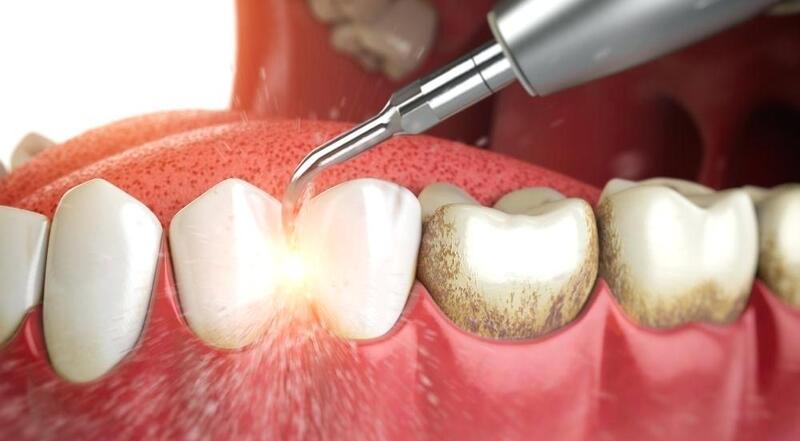
As the name implies, ultrasonic cleaning is performed with ultrasonic waves emitted by a particular device. This method can effectively, gently and painlessly remove even dense dental plaque from the tooth surface and restore the natural appearance of the patient’s enamel.
However, ultrasonic cleaning can cause some discomfort in case of teeth sensitivity. It is not recommended to use ultrasound to clean crowns and implants, but it is excellent for removing tartar under the gums. Make an appointment for an ultrasonic cleaning procedure, and be sure you will like the result.
How Do I Get my Teeth Professionally Cleaned?
Before starting the ultrasonic cleaning, the dentist carefully examines the oral cavity for dental plaque presence. While doing this, the expert also estimates plaque density and chooses the appropriate cleaning mode. Then the ultrasonic cleaning process begins:
- Scaler. That is a device that generates ultrasonic vibrations. It has a special narrow nozzle. A special liquid of antiseptic solution and air is pumped through it. With its help, the teeth are cooled, and the plaque is washed away. The ultrasonic wave destroys the plaque, which a saliva ejector can easily remove.
- Polishing. Teeth become rough after brushing. Food debris and bacteria accumulate on such a surface much faster.
- Fluoridation. This step is performed to reduce the teeth sensitivity and strengthen the enamel. The glaze is dried with warm air, coated with a fluoride solution, and dried again.
Ultrasonic Teeth Cleaning Aftercare
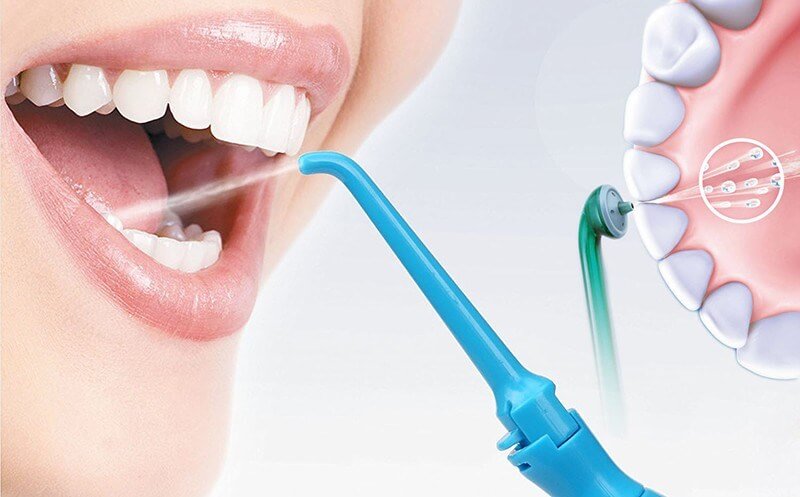
Follow the doctor’s recommendations after the ultrasonic cleaning. It is not recommended to eat for the next two hours during this period. During this time, the fluorinated material keeps fixing.
On the first day after each meal, you need to rinse your mouth with water. It is also necessary to avoid dyes and smoking. In case of mucosal injury, the doctor will prescribe antiseptic drugs during cleaning.
Teeth Scaling: Does it Hurt or Not? Patient’s Reviews
Ultrasonic tooth cleaning most often goes without any discomfort. Sometimes, however, the patient may feel pressure due to thin or sensitive enamel. Moreover, if there is a lot of tartar accumulated under the gums, the cleaning will take longer. This can also cause pain.
Do you want to make an appointment? Call us, and we will choose a convenient time for you!


